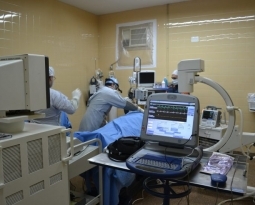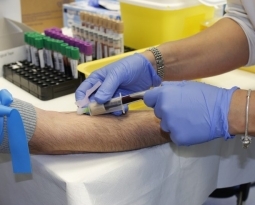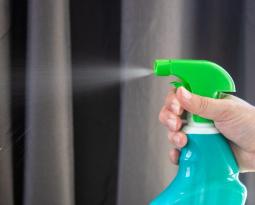New Jersey Patent of the Month – January 2022
Medical procedures are required to have strict sanitation protocols in order to prevent spread of infection, contamination, or any adverse effects. Ofcourse, where possible, medical procedures use one-time-use tools or products. This isn’t feasible for systems that are more expensive or technologically advanced. For instance, even though an endoscope is inserted into the body through incisions or natural orifices, the endoscope cannot be single use. Instead, they are sanitized and cleaned between patients. Unfortunately, there are cases where the cleaning process fell short and there were adverse effects.
Research has shown that an improperly cleaned system can end up having a biofilm – or a series of bacterial colonies – on the surface or in crevices of the endoscope. NovaFlux, Inc. has been innovating the healthcare industry for decades. They started with their IP-protected Two-Phase Flow technology to sterilize narrow channels and have continued to improve sanitation practices in healthcare since.
Recently, they have developed a tool that can effectively test a medical device’s hygiene. This removes any uncertainty surrounding the sanitation status of a tool and ensures that all devices are ready for the next patient. The tool is a type of sampling system which uses a fluid supply system to pass a sampling liquid or gas down the endoscope or similar narrow passage devices. The sterile sampling liquid recovers viable pathogens as it passes through the passageway and comes out landing in a container to be analyzed. The liquid is formulated with surfactants that improve the ability to dislodge pathogens such as Enterococcus faecalis and Pseudomonas aeruginosa bacteria.
This system is effective for detecting the presence of biofilms – the most difficult contaminant to remove from a surface. As long as the device passes this sanitation test, it can be used in the next procedure. If a bacteria or pathogen is detected, staff are then aware they must more thoroughly sanitize and re test it before it can be used again. This type of rigorous sanitation is crucial to performing safe procedures.
Are you developing new technology for an existing application? Did you know your development work could be eligible for the R&D Tax Credit and you can receive up to 14% back on your expenses? Even if your development isn’t successful your work may still qualify for R&D credits (i.e. you don’t need to have a patent to qualify). To find out more, please contact a Swanson Reed R&D Specialist today or check out our free online eligibility test.
Who We Are:
Swanson Reed is one of the U.S.’ largest Specialist R&D tax advisory firms. We manage all facets of the R&D tax credit program, from claim preparation and audit compliance to claim disputes.
Swanson Reed regularly hosts free webinars and provides free IRS CE and CPE credits for CPAs. For more information please visit us at www.swansonreed.com/webinars or contact your usual Swanson Reed representative.

















